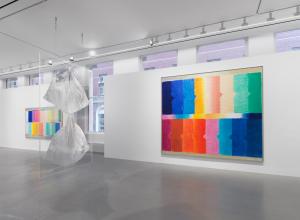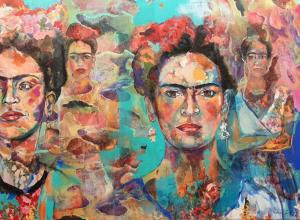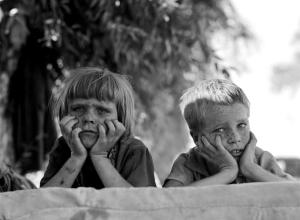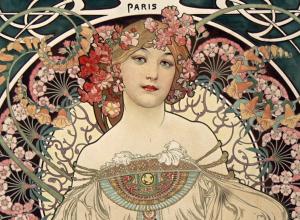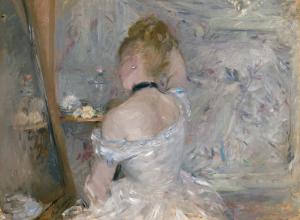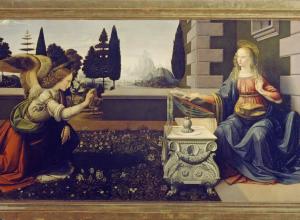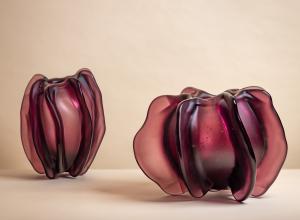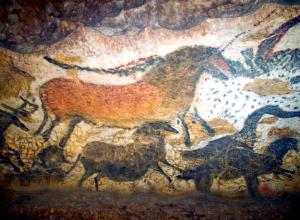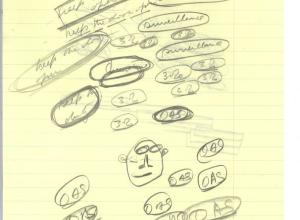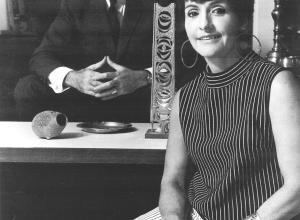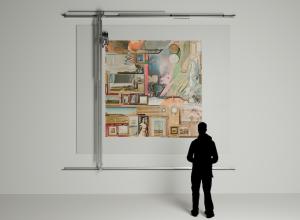
Nicole Eisenman, Seder, 2010, oil on canvas
It’s the first night of Passover! Tonight, Jews all around the world will sit down together and recount the story of their ancestor’s exodus from Egypt and the Jewish people’s liberation from slavery. The Passover story is from the book of Exodus, which is one of the most central stories of the Torah, and it reflects some of the biggest themes in Jewish history: oppression, freedom, adversary, and the idea of a homeland. To celebrate this important holiday, Art & Object took a look at some artworks inspired by or made for Passover.

This is a page of an early 15th century manuscript. It’s decorations contain initial word panels, a few fully framed borders, and two full page miniatures. The miniature scenes in frieze form seem to be taken from medieval Christian iconography. But here, it illustrates the study and discussion involved in the celebration of the Passover seder. Every figure is holding a book, presuming a Haggadah, the book of prayer that tells the story, and is involved in discussing it.
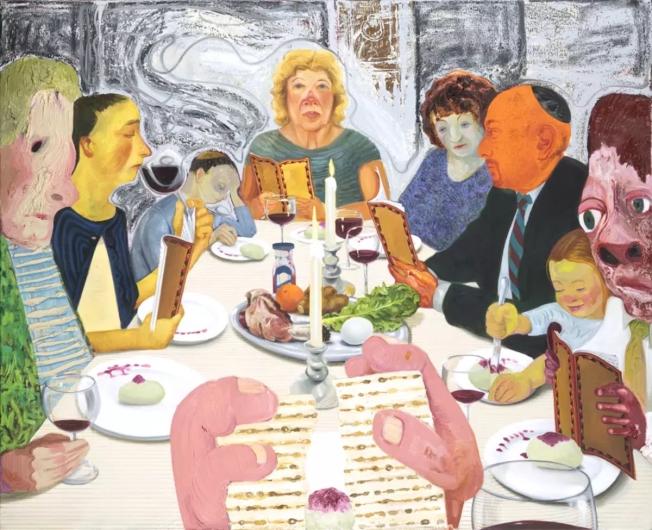
Contemporary artist Nicole Eisenman’s paintings are known for their dark human, bulging figures, and critiques of pop culture and art history. In this work, Eisenman captures the Seder meal through the eyes of the seder leader, who directs the evening’s rituals, whose large hands dominate the foreground. Eisenman has captured a moment of the dinner – and every emotion that comes with it: someones bored, another is waiting, reading, thinking, or eating.
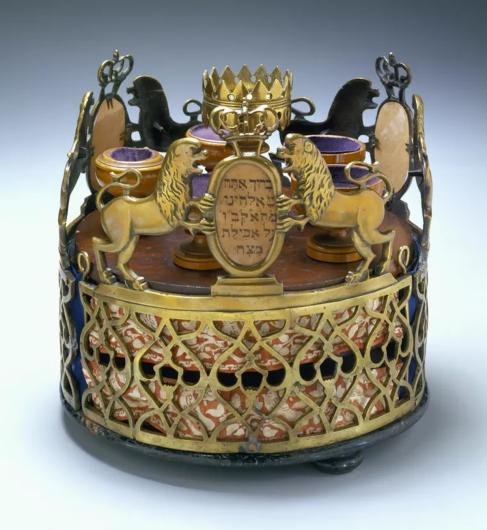
The main events for Passover include the home service, called a “seder” on the first night of Passover, and those outside Israel repeat the seder on the second night. During a seder, the members around the table tell the story of the Exodus and eat symbolic foods that recall the bitterness of bondage and the haste of their escape to freedom. In the middle of the table is a seder plate, which holds all the symbolic foods, from bitter herbs to saltwater. This is a unique seder set. It combines trays for matzah with holders for the other symbolic foods, along with a pedestal for the wine cup that is filled for the prophet Elijah. This seder set looks like a crown, it even has majestic lions that hold up cartouches, that themselves are crowned.
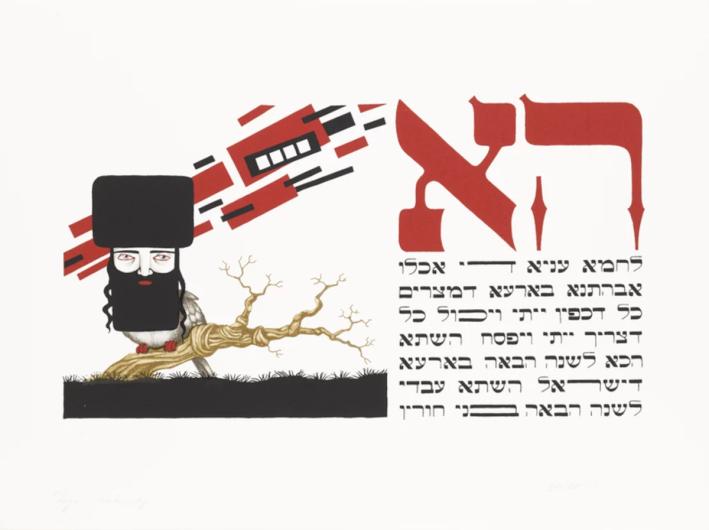
Zoya Cherkassky is a Ukranian Jew, who was born in Kiev and immigrated to Israel. She regularly works with visual images adopted from Jewish tradition. In her Aachen Passover Haggadah, she created a contemporary manuscript of fifty unbound pages with handwritten text in black and red ink, accompanied by rebellious imagery. She deliberately introduces elements of anti-Semitic symbolism in this Haggadah, thus addressing prejudiced perceptions of Jews throughout the centuries.
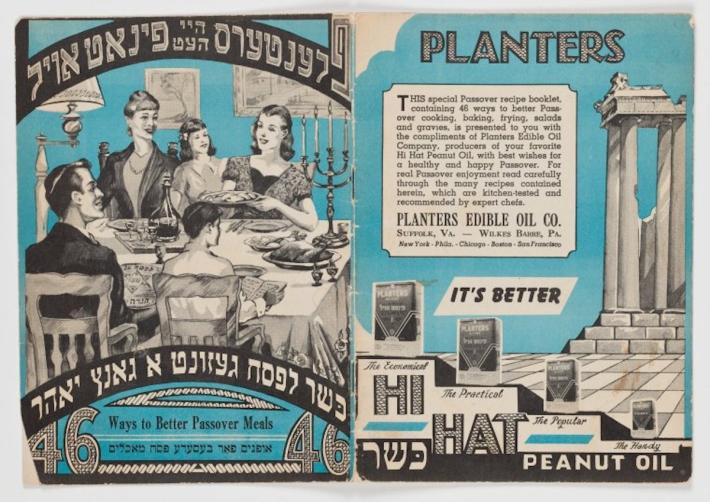
Passover food isn’t always great. Any leavened or fermented grain products are prohibited for the eight days of Passover to commemorate the Jews’ freedom from Egyptian slavery. When the Jews escaped Egypt, they didn’t have time to let their breads rise before going into the desert. The New York Public Library has on reserve this vintage booklet from Planter’s Hat Peanut Oil that boasts great recipes featuring…you guessed it: Planters Peanut Oil. Some recipes include chopped liver and eggs, fried veal cutlets, and liverburgers. The cookbook is in English but also Hebrew. Though these recipes don’t sound so delicious nowadays, they were Mr. Peanut approved back in the 40s!
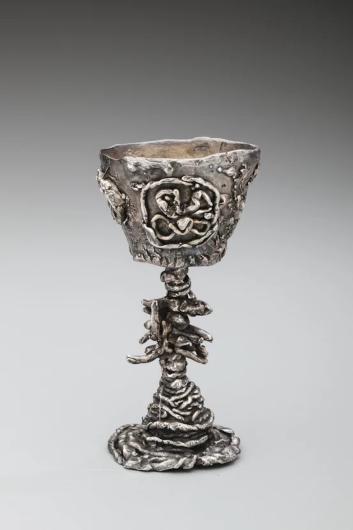
During a seder, each adult drinks four cups of wine, to represent the redemption of the Israelites from slavery under the Egyptians. A fifth cup is also poured, and reserved for the prophet Elijah, in the hopes that he will visit during the celebration. This cup represents the idea of future redemption, and it is left unconsumed, sometimes at the front door of a household. Here is Geber’s rendition of the Passover cup, composed of bronze that is silver plated.

This is a page of an early 15th century manuscript. It’s decorations contain initial word panels, a few fully framed borders, and two full page miniatures. The miniature scenes in frieze form seem to be taken from medieval Christian iconography. But here, it illustrates the study and discussion involved in the celebration of the Passover seder. Every figure is holding a book, presuming a Haggadah, the book of prayer that tells the story, and is involved in discussing it.

Contemporary artist Nicole Eisenman’s paintings are known for their dark human, bulging figures, and critiques of pop culture and art history. In this work, Eisenman captures the Seder meal through the eyes of the seder leader, who directs the evening’s rituals, whose large hands dominate the foreground. Eisenman has captured a moment of the dinner – and every emotion that comes with it: someones bored, another is waiting, reading, thinking, or eating.






